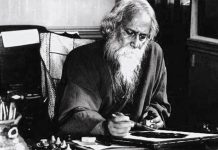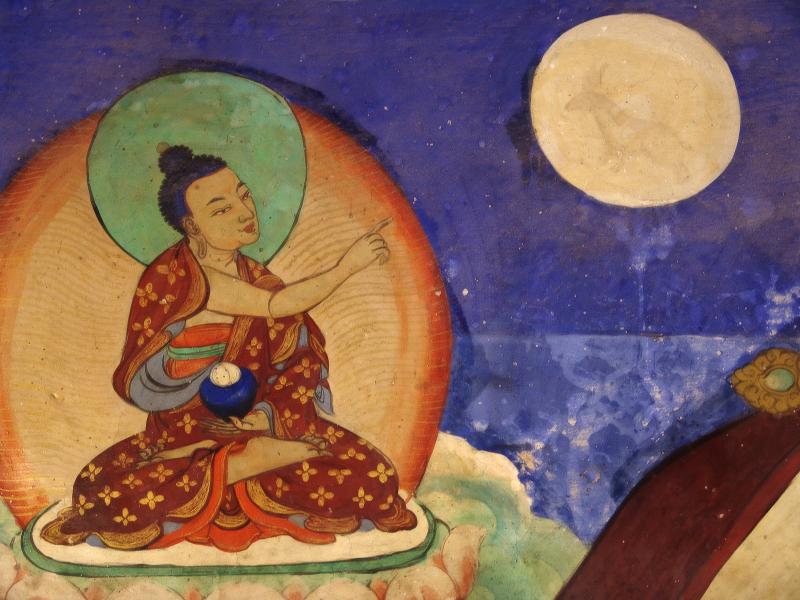What “it” has a greater hold on people’s imaginations or limits them more than ideas about what biological sex must mean, what I call “the prison of gender roles”? Almost all conventional people—often called “ordinary worldlings” in Buddhist texts—as well as many Buddhists hold fast to the notion that sex and gender must mean something definitive and incontrovertible. I cannot count the number of times convinced, sincere Buddhists who believe in egolessness have, nevertheless, adamantly argued with me that gender could not be dharmically irrelevant. It felt so real to them, the most real factor among their many identities, and, therefore, must mean something. In fact, a well-known Buddhist author once asked me to write an essay on what is distinctive about women’s enlightenment experience! I declined that invitation but countered that I would contribute an essay called “How Clinging to Gender Identity Subverts Enlightenment.” To imagine there could be something distinctive about women’s enlightenment experience is to suppose that gender identity exists as a real entity, rather than as something ephemeral and ultimately insubstantial. It would entail the claim that gender identity, alone among conditioned phenomena, is not empty of inherent existence but truly exists. Clinging to gender identity and letting conventional ideas about gender dictate one’s life thus contradicts all central Buddhist teachings. One would then also have to contend that egolessness is gendered, which would be a self-contradictory, illogical proposition. Imagine trying to hold on to both ends of the contradiction: though there is no permanent abiding self (or ego), nevertheless gender is real. Illogical as that proposition is, many seem to hold to it nevertheless.
The Dharmic Response to Gender
Buddhist disciplines need to include contemplation of these truths and the development of greater awareness of them. Yet mere mention of feminism, gender, women’s equality, or related topics brings giggles, hostility, and an assumption that such discussions could be of interest only to women and need not concern men, even though men are as fully gendered as women. These common ways of rejecting those who bring up topics pertaining to gender give the impression that the proper dharmic response to questions about gender is to ignore and suppress them. Especially when teachers are answering questions from timid (usually female) students about gender and Buddhism, a usual response is to strongly suggest that only people who are not sufficiently dedicated to Buddhadharma would ever think of raising questions about traditional Buddhist ways of dealing with gender—that good practitioners would not raise such issues.
Countless times I have heard revered teachers reply, somewhat angrily, to questioners, “Aren’t you over that yet!” or “Don’t you know that enlightened mind is beyond gender, neither male nor female, so, therefore, concerns about gender are unnecessary and irrelevant?” The Asian teacher newly arrived in the West says in a shocked voice, “But in Asia, we really revere our mothers.” Or the quintessential answer of the inexperienced teacher, “Just practice more. Sitting on the cushion solves everything. Eventually you won’t mind gender discrimination if you just practice enough.” No other dharmic question generates the answer that it would be more dharmic to just ignore what gives rise to the question!
The deep pain buried in these questions about gender deserves better answers than telling students that they should have already transcended that pain when they have only begun to have a little awareness of the peace that transcending conventional, samsaric ego can bring. And the teachers need to explore far more deeply how much the suffering of the samsaric ego is intertwined with the gendered ego—for both women and men. In fact, we should equate all three terms and use them interchangeably—“conventional,” “samsaric,” and “gendered” ego.
But when dharma teachers answer questions about gender in such fashions, their very defensiveness, which turns so quickly into a recommendation to ignore, indicates that they may not have fully come to terms with the questions themselves. Asian teachers dealing with Western students may be misled by the superficial, recent veneer of equality between men and women, assuming equality to be much more deep-seated in the West than it is. For one thing, Western students have never been taught that “enlightened mind is beyond gender, neither male nor female.” Nothing in the Western religious or cultural heritage even hints at a state of mind “beyond gender, neither male nor female.” Everything from the original human being to the deity is sexed—male sexed. Everything of value in the culture has been the monopoly of males. So how could a Western student be expected to take as a real possibility for herself what the Buddhist teacher expects her to already know? It seems to me that some Asian teachers have little intimation of how much their Western students have internalized Western stereotypes of female inferiority and how deeply they have been scarred by their religious upbringing. Additionally, few male Asian teachers have worked deeply with female dharma students in their cultures of origin.
Contrary to all the revered teachers who recommend that, because enlightened mind is beyond gender, we should ignore our discomfort with conventional, deeply entrenched practices surrounding gender, Dogen Zenji’s text tells us we must study that gendered self before we can truly forget it. And, that if we do not study the self, we can’t and won’t forget the self either. Clearly, this sequence of studying and then forgetting applies to the gendered self as much as to any aspect of the self. It is curious that traditional analyses using “color” or “shape” to break down our assumption of real selfhood never use the terms “male” or “female” in the same way. This omission allows people to easily believe in egolessness while clinging to conventional gender norms and stereotypes. Would it not be just as useful to disclaim selfhood based on having a male or female form as it is to disclaim selfhood conferred by color or shape? Doing so intensifies the deconstructive power of analysis, making egolessness much less a theoretical belief and much more an “in your face” reality. Without that additional step, people can easily do the traditional exercises and genuinely believe in egolessness but still be quite attached to gender.
Why Is it Important to Rigorously Deconstruct Gender?
But if we all believe that enlightened mind, the natural state of mind, is beyond gender, why is it important to so rigorously deconstruct gender? When teachers scold students who bring up gender issues by reciting the slogan that enlightenment is beyond gender, they are missing an important point. People cannot go to a state of mind “beyond gender” on the spot any more than they can just drop self-grasping the first time they hear teachings about egolessness, even if they immediately and intuitively grasp the truth of those teachings. That transformation takes a great deal of time and effort, and just as training is necessary for people to actually approach egolessness, so is training required to transcend the prison of gender roles—which, in fact, amounts to the same thing as relaxing into egolessness. Neither just happens.












